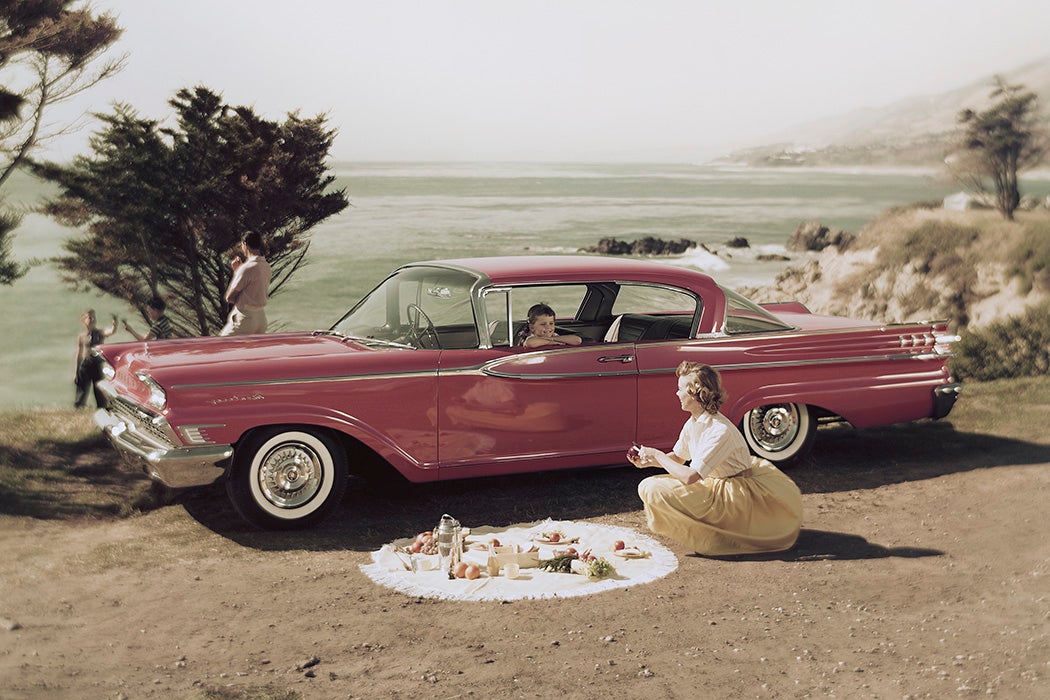In 1958, landscape architect A. Carl Stelling tried to calm the fears of a public that would soon be connected by the interstate highway system. It wasn’t just anxiety about what these new roadways would mean for communities that was on people’s minds, there was also concern about exactly who would be using the highways. As Stelling wrote, “Say what you will—and all of us have—you are going to see more and more of the woman driver.” He added, “This prospect is not as catastrophic as it may appear.”
Stelling predicted that this new crop of “timid” and “panicky” drivers would spark changes to current roadways. Feminine pastel colors would “replace the drab, monotonous tones of present-day pavement”; designs would include an extra-slow, truckless lane for “women who become nervous at high speeds”; and wider travel lanes would allow women “a greater margin of error in their maneuvering.”
Stelling was hardly the first—or the last—to ask about the role of gender in the car industry. As sociologist Diane Barthel-Bouchier writes: “From their beginnings at the end of the nineteenth century, automobiles were defined as masculine.” The electric car, for example, was initially seen as a “ladies’ car for gadding about the city,” compared to the more “manly” gas-powered option.
Car design, too, was gendered. Early auto manufacturers weren’t as concerned with how a car looked and believed that spending too much time thinking about such things was feminine. But by the late 1920s, that idea began to change, as manufacturers came to recognize that style mattered. Women didn’t necessarily benefit, though. While there were women designers working in the art department of General Motors, for instance, they were only given assignments related to car interiors. Even the men who contributed exterior design elements were “derided as ‘a bunch of dressmakers.’”
Modern car manufacturers continued trying to appeal to women. As researchers Roy Schwartzman and Merci Decker point out, this has remained an open question: “[H]ow can women’s voices be heard in the design and manufacture of an automobile in ways that do not accelerate their marginalization?”
Schwartzman and Decker analyze Volvo’s Your Concept Car (YCC). Introduced in 2004, the YCC was “the first automobile designed entirely by women and targeting women consumers.” While this was a step forward for women car designers (who are underrepresented in the industry), Schwartzman and Decker argue that the marketing of the car just reinforced “the same social roles the female design team supposedly attempt[ed] to overturn.”
Weekly Newsletter
The YCC offered “interchangeable seat covers and carpets” in eight colors, and Volvo emphasized the car’s “ease of cleaning.” There was no gas cap, “so fingernails will not be broken trying to pry it open.” Maybe the most unusual feature was the hood, which could not be opened. This “permitt[ed] engine maintenance and repair only by a qualified Volvo technician,” because “the design team decided early on that women preferred not to have to look under the hood.”
Ultimately, Schwartzman and Decker argue, ideas like Your Concept Car show “that a product does not necessarily become a liberatory device for women simply because it was formulated by women.”







